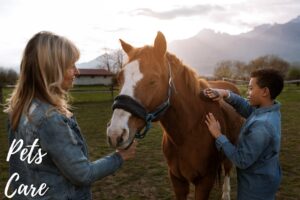Determining the Ideal Acreage for a Horse Rescue: Factors, Considerations, and Best Practices
Introduction:
Horse rescue organizations play a vital role in caring for neglected, abused, or abandoned horses, providing them with shelter, medical attention, and rehabilitation. However, establishing and managing a horse rescue entails numerous considerations, with acreage being a crucial factor. The question arises: How many acres do you need for a horse rescue? This article delves into this query, exploring various factors, considerations, and best practices to determine the ideal acreage for a horse rescue operation.
Understanding the Needs of Horses:
Before delving into acreage requirements, it’s essential to understand the needs of horses. Horses are large animals that require ample space to graze, exercise, and socialize. Additionally, they need access to shelter, clean water, and veterinary care. Neglecting these requirements can lead to health issues and behavioral problems.
Factors Influencing Acreage Requirements:
Several factors influence the acreage requirements for a horse rescue. These include:
1. Number of Horses: The more horses a rescue accommodates, the larger the acreage needed to provide adequate space for each animal.
2. Grazing and Forage: Horses require access to grazing land for proper nutrition. The availability of pastureland influences the acreage needed.
3. Exercise Areas: Adequate space for horses to exercise is crucial for their physical and mental well-being. This includes paddocks, riding arenas, and open fields.
4. Shelter: Facilities such as barns, run-in sheds, and stalls are necessary to provide shelter from the elements.
5. Drainage and Terrain: The topography of the land and its drainage capabilities impact its suitability for horsekeeping. Flat, well-drained terrain is preferable.
6. Zoning and Regulations: Local zoning laws and regulations may dictate minimum acreage requirements for keeping horses and operating a rescue facility.
7. Future Expansion: Considerations should be made for future growth and expansion of the rescue operation.
Calculating Acreage Requirements:
Calculating the precise acreage needed for a horse rescue involves a combination of factors and considerations. While there is no one-size-fits-all answer, there are some general guidelines and formulas that can help determine the acreage requirements:
1. Space per Horse: A common rule of thumb is to provide at least one to two acres of pasture per horse. This allows for adequate grazing and reduces the risk of overgrazing.
2. Shelter and Facilities: The size and number of barns, shelters, and other facilities depend on the number of horses and their specific needs.
3. Exercise Areas: Adequate space for riding arenas, round pens, and turnout paddocks should be factored into the acreage calculations.
4. Buffer Zones: Buffer zones between neighboring properties and natural barriers like trees or fences should be considered for privacy and noise reduction.
Best Practices for Acreage Planning:
In addition to considering the aforementioned factors, there are some best practices to follow when planning the acreage for a horse rescue:
1. Conduct Site Surveys: Before purchasing or leasing land, conduct thorough site surveys to assess its suitability for horsekeeping.
2. Consult with Experts: Seek advice from equine professionals, veterinarians, and land-use planners to ensure that the chosen acreage meets the needs of the rescue operation.
3. Plan for Sustainability: Implement sustainable land management practices to preserve natural resources and minimize environmental impact.
4. Consider Accessibility: Choose a location that is easily accessible for volunteers, staff, and visitors, with proximity to major roads and infrastructure.
5. Budget Wisely: Factor in the cost of land acquisition, infrastructure development, and ongoing maintenance when budgeting for acreage requirements.
Case Studies and Examples:
Several successful horse rescue organizations serve as examples of effective acreage planning:
1. ABC Horse Rescue: Located on 50 acres of rolling pastureland, ABC Horse Rescue provides ample space for grazing, exercise, and shelter for over 100 horses.
2. XYZ Equine Sanctuary: Situated on 20 acres of wooded terrain, XYZ Equine Sanctuary utilizes innovative land management practices to maximize space and minimize environmental impact.
Conclusion:
Determining the ideal acreage for a horse rescue involves careful consideration of various factors, including the number of horses, grazing and forage availability, shelter and facilities, and zoning regulations. By following best practices and consulting with experts, horse rescue organizations can ensure that their acreage meets the needs of the animals while promoting sustainability and long-term viability. Ultimately, providing horses with a safe and spacious environment is essential for their well-being and successful rehabilitation.

